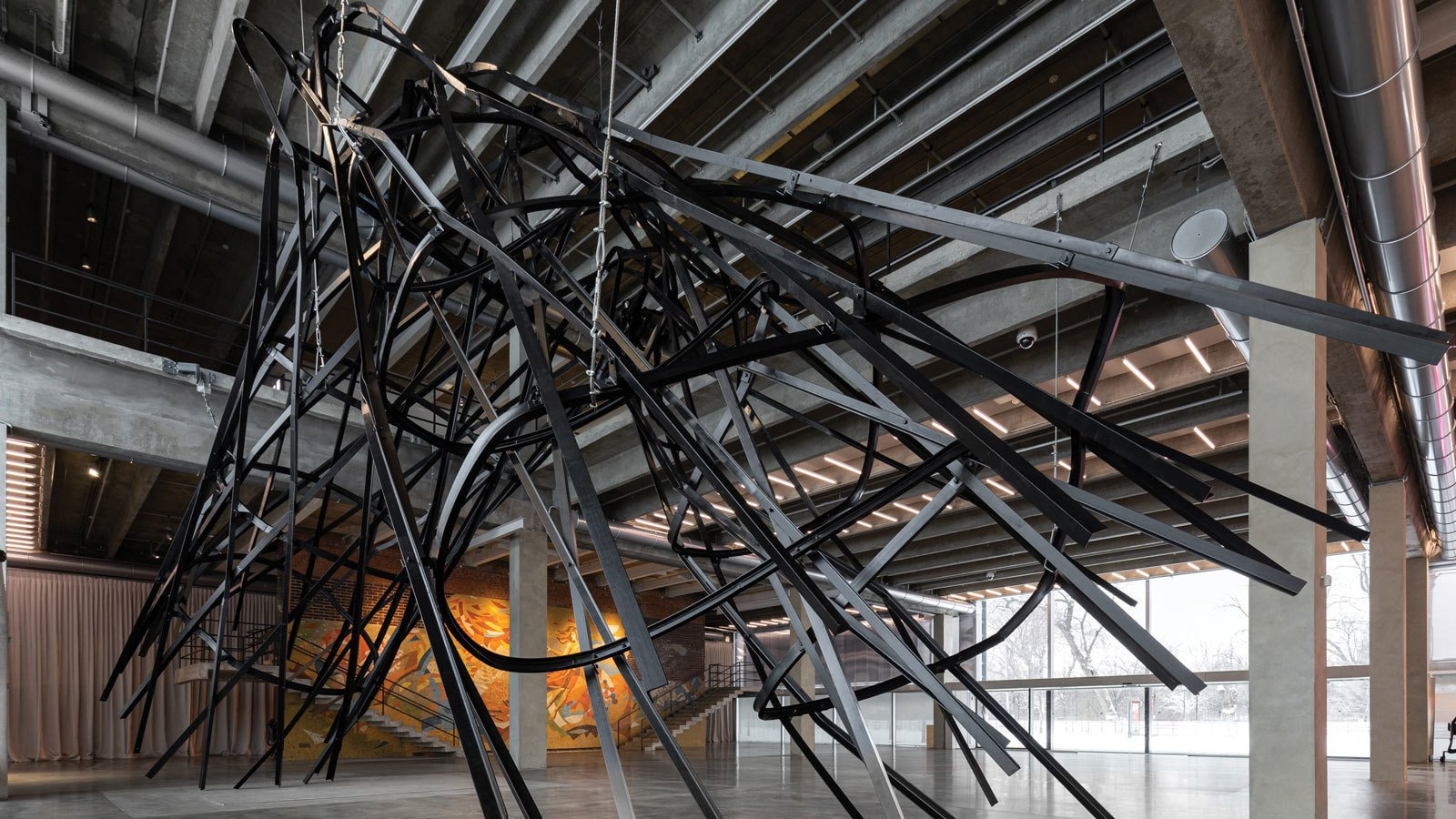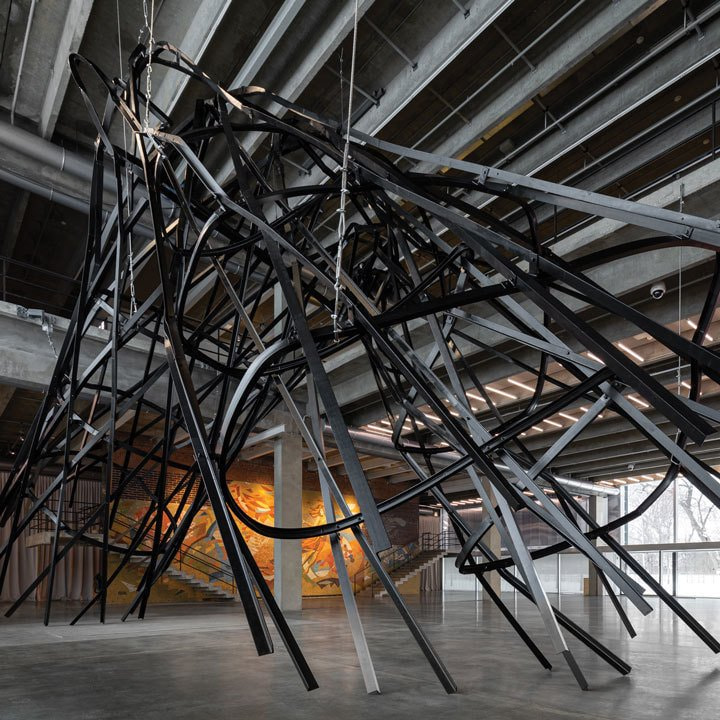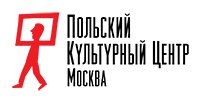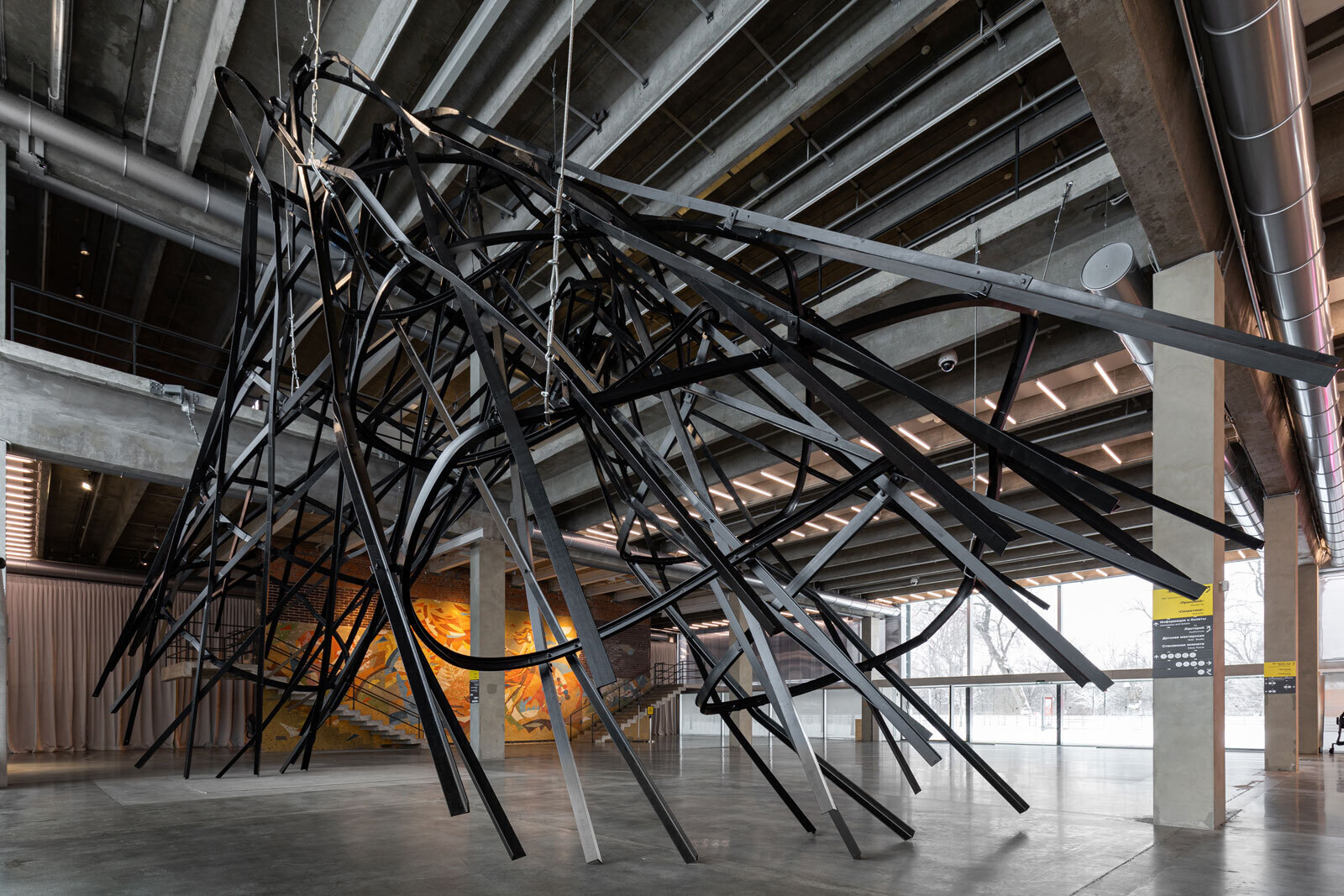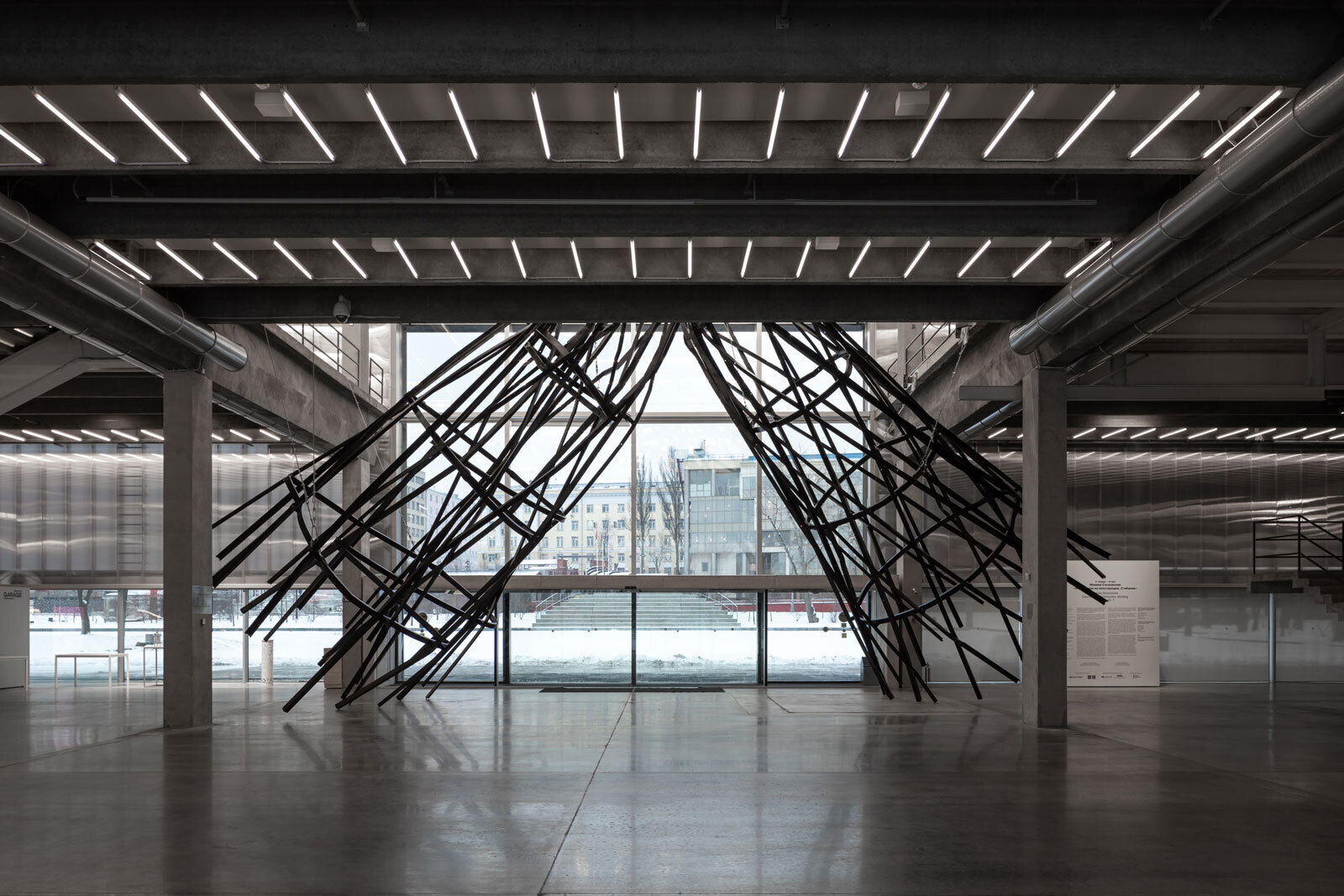Garage presents a new Atrium Commission, a sculpture by Monika Sosnowska, one of the best-known representatives of the generation of Polish contemporary artists who became active in the early 2000s.
Monika Sosnowska is a sculptor and installation artist, the poetics of whose work is shaped by her interest in twentieth-century architecture as a linguistic system. Each element of this system (material, form, structure, etc) is extracted from its historical, national or functional context, carefully studied, and deformed.
In moving away from painting and architectural environments toward metal objects, Sosnowska has taken a path similar to that of the Russian avant-garde, whose fascination with constructing new worlds inside the functionally neutral space of the painting (or the gallery) gave way to the production of real objects, where industrial materiality was as much a challenge as an inspiration.
Exercises in Construction, Bending was inspired by Sosnowska’s research trip to Russia, where, along with other masterpieces of 1920s and 1930s architecture, she was fascinated by the engineering complexity and visual simplicity of Vladimir Shukhov’s hyperboloid structures.
At the time of their invention in the late nineteenth century, hyperboloid towers embodied ideas of advanced technology, durability, and economical design. Sosnowska’s 20-meter, 7-tonne grid structure, however, is not functional in that way: its body is bent in half, toppled, and crammed into the Museum’s atrium. Bending a hyperboloid tower is not a simple task. It is a venture from the realms of engineering fantasy. Meter by meter, the structure was bent with the help of excavators. Subjected to this “torture,” the sculpture in the Museum appears distressed and cramped. The impression it gives echoes history (the Shukhov Radio Tower collapsed during the first stage of construction) and manifests a playful inquiry into how our perception of architectural forms shifts. Continuing her “exercises in construction,” Sosnowska neutralizes the perceived “discomfort” of her sculpture by giving it a smooth finish, which makes its surface visually perfect and pleasing to the eye.
The Soviet modernist space of Garage, for which Bending was made, plays a key role in its presentation. The aesthetics, proportions, and structural design of the Museum, which occupies the former café Vremena Goda (1968), were carefully preserved by architects OMA during the building’s reconstruction (2015) and represent the Soviet version of the International Style of the era. Within this context, Sosnowska’s interest in modernism, which started with her interested in Polish modernism and expanded to its international roots (constructivism, Bauhaus, Mies van der Rohe), finds new resonance. The artist seems to build a plausible story for the modernist architectural language that Khrushchev dreamed of at one point during the Cold War. He saw modernist architecture as an opportunity to communicate to the West the image of an open and progressive state, and as a smart investment that would help solve the housing crisis and demonstrate the triumph of the Soviet regime. The quality of the materials used in construction, however, as well as the overall ideological climate in the Soviet Union, meant that the results diverged significantly from initial intentions. In Sosnowska’s work, modernism is universally accessible and applicable, and speaks openly of the lived experience of the Soviet utopia.
The public program for the exhibition includes a discussion of Sosnowka’s practice by curator Anastasia Mityushina and ETH Zurich professor and architect Tom Emerson (6a architects) on February 1, 2020. Garage Library will present a selection of Sosnowska’s exhibition catalogues and information on the architects and movements that have informed her work.
Curator: Anastasia Mityushina
